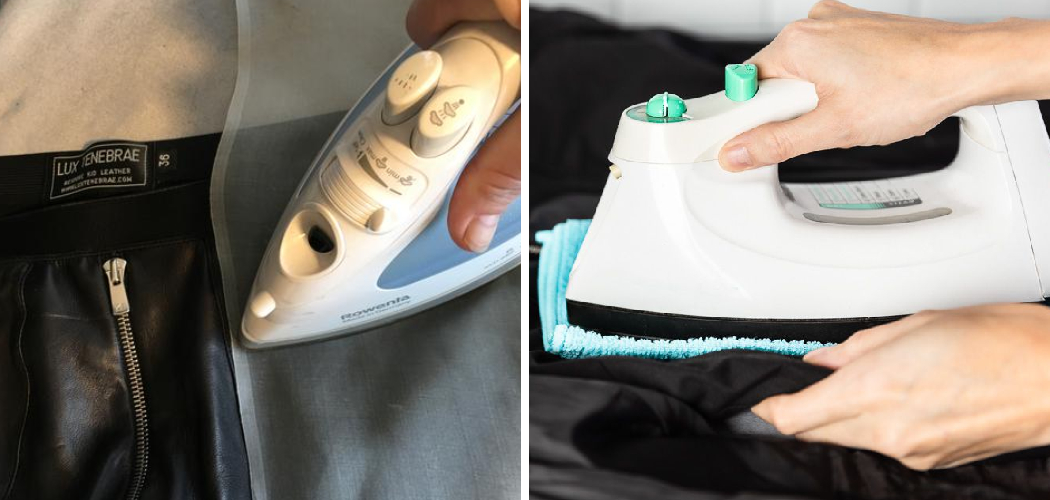Do you have a leather jacket that’s wrinkled and in need of some serious TLC? Do you want to make a statement with your outfit while also protecting yourself from the elements? Are you eager to figure out how to get those wrinkles out so your garment can look its best? With the right supplies, ironing a leather jacket is surprisingly straightforward.
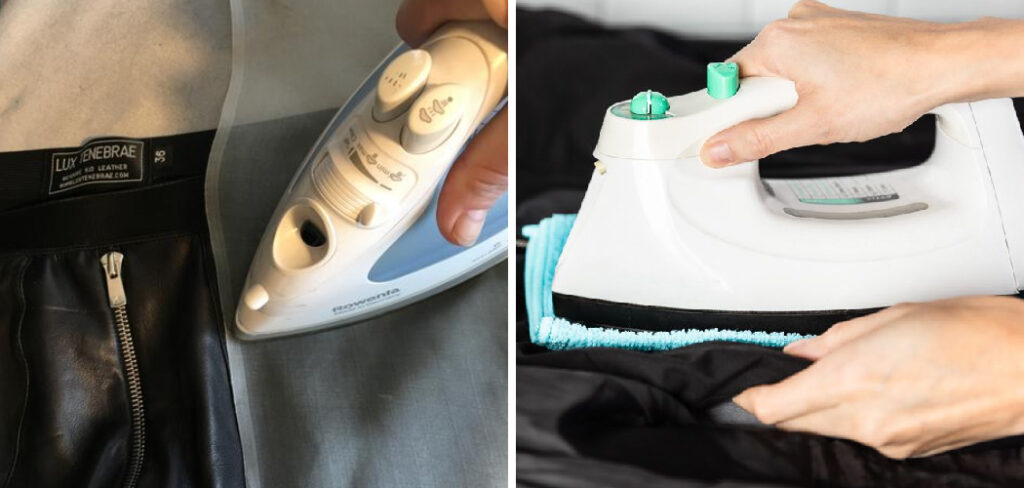
We’ll be taking you through the steps, clearing up any confusion about this common issue – learn how to make your leather garments look like new again with our helpful guide! Read on for an expert guide on how to iron a leather jacket.
Can You Iron a Leather Jacket?
The answer is, yes. Even though leather jackets are delicate garments, they can be treated with an iron – given that you take the necessary precautions and use appropriate supplies (we’ll cover those soon).
What You Will Need
The supplies you’ll need for this task are:
- Clothes iron
- Clean, damp cloth or sponge
- Leather conditioner (optional)
- Ironing board (optional)
How to Iron a Leather Jacket in 10 Easy Steps
Step 1: Clean the Jacket
Make sure your leather jacket is clean. Dirt and debris can cause damage during the ironing process, so it’s important to make sure the garment is free of any particles before you begin. Also, make sure the jacket is completely dry before you move on to step two.
Step 2: Turn off the Steam
The steam setting isn’t necessary when ironing leather – and can actually do more harm than good. Make sure your steam settings are turned off (if available) before you begin tackling those wrinkles in your jacket.
Step 3: Get the Iron Ready
Set your iron to a low heat setting – around 105-120°F (40-48°C). This is important as leather can be easily damaged by too much heat. Make sure you use a protective cloth or thin towel between the leather jacket and the iron, as this will provide an extra layer of protection against scorching.
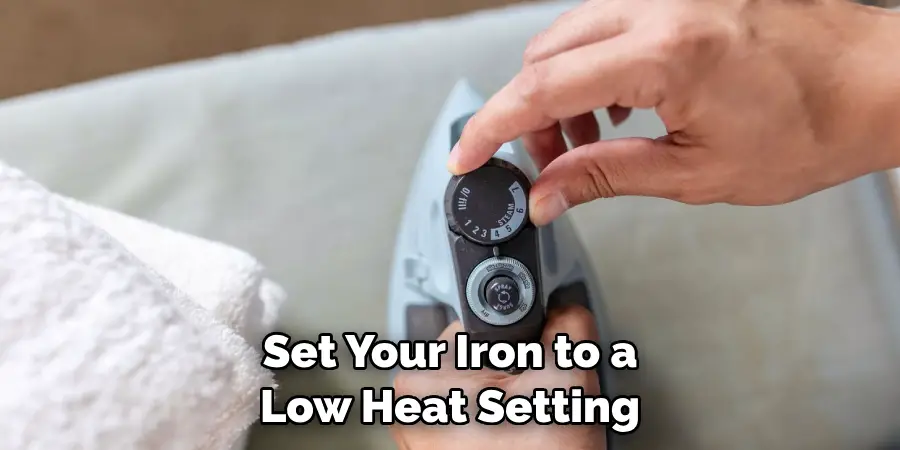
Step 4: Iron Away
To make your leather jacket look its best, begin ironing slowly and gently in small circular motions. Make sure the iron is not left in the same area for too long, and keep it moving all over the garment as you work. If wrinkles are persistent, repeat this step a few times until they have been removed.
Step 5: Check for Damage
Before you move on to the next step, make sure your jacket is free of any scorch marks or areas that have become misshapen due to too much heat. If so, gently rub these areas with a damp cloth and repeat steps three and four until the problem has been fixed.
Step 6: Apply Leather Conditioner (Optional)
If you want your leather jacket to look its best, consider applying a light coat of leather conditioner. This will help moisturize the garment and keep it looking great for years to come. Make sure you choose an appropriate product – leather conditioners made specifically for jackets are usually the best option.
Step 7: Let the Jacket Cool Down
Allow your leather jacket to cool down completely before you wear it again. The garment should feel and look brand new once the cooling process is complete. Jacket-specific leather conditioners can greatly help in this process, as they protect the fabric and keep it looking great.
Step 8: Store Properly
When you’re done wearing your leather jacket, make sure to store it properly. Leather jackets should be hung on a hanger and placed in a cool dry place (preferably away from direct sunlight). You can also use a protective garment bag to further protect the jacket and keep it looking great.
Step 9: Regular Care
Leather jackets require regular care in order to stay in good condition. Make sure you clean your garment regularly, using natural cleaning solutions such as leather wipes or damp cloth – avoid any detergents or harsh chemicals that could damage the fabric.
Step 10: Reapply Conditioner
Leather jackets should be treated with a leather conditioner at least once every six months to ensure that it stays in good condition for years to come. Make sure you select an appropriate product – leather conditioners specifically designed for jackets are the best option.
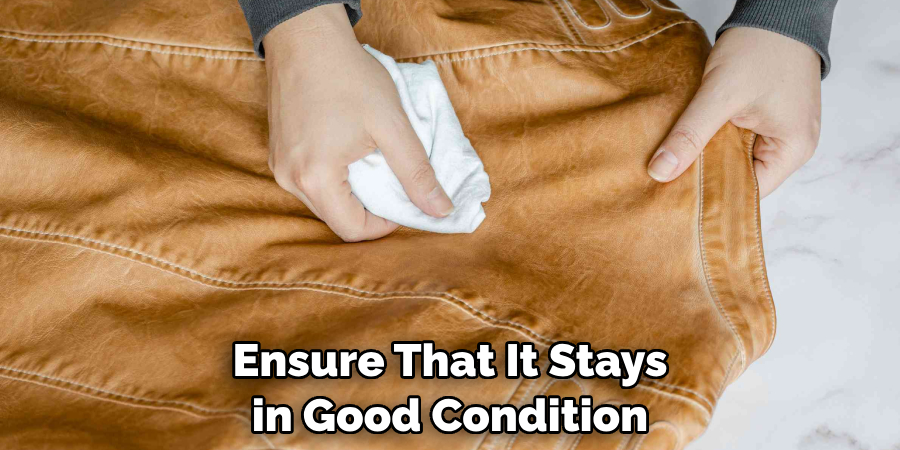
Follow these steps carefully, and you’ll be able to successfully iron your leather jacket – ensuring it looks its best for years to come. With the right supplies, know-how, and a bit of patience, you can keep your favorite leather garments looking great for a long time.
8 Safety Precautions to Follow When Ironing A Leather Jacket
It is important to take extra precautions when ironing a leather jacket. Here are 8 tips for safety:
- It is always recommended to use an iron with temperature settings, as high heat can cause irreversible damage to the leather. Temperature-controlled irons are especially important for thinner leathers.
- Use a pressing cloth between the iron and the leather to avoid damaging the garment. A clean piece of cotton or linen will work best, as it provides an insulation layer between the heat and the leather. Also, it will prevent the leather from sticking to the iron.
- Make sure to keep the iron moving constantly so that one spot does not become excessively hot and cause damage to the material. Also, make sure not to press too hard.
- Do not attempt to iron leather without first being familiar with the material and its properties. Different types of leather will require different methods of handling and will demand different temperatures for successful ironing.
- Start with a low-temperature setting on the iron before gradually increasing it as needed. This way, you can avoid scalding or burning the leather.
- Never leave the iron unattended while it is in use, as it may cause damage to the material and even start a fire. Using a timer is a great way to stay safe and ensure that you don’t forget about the iron.
- When finished, make sure to unplug the iron immediately and let it cool down before storing it away. Also, do not store the iron away until you have made sure that it is completely dry.
- Always take your time when ironing leather, as this will ensure that the material is treated correctly and does not get damaged. Taking a break in between ironing sessions may also help you avoid mistakes.
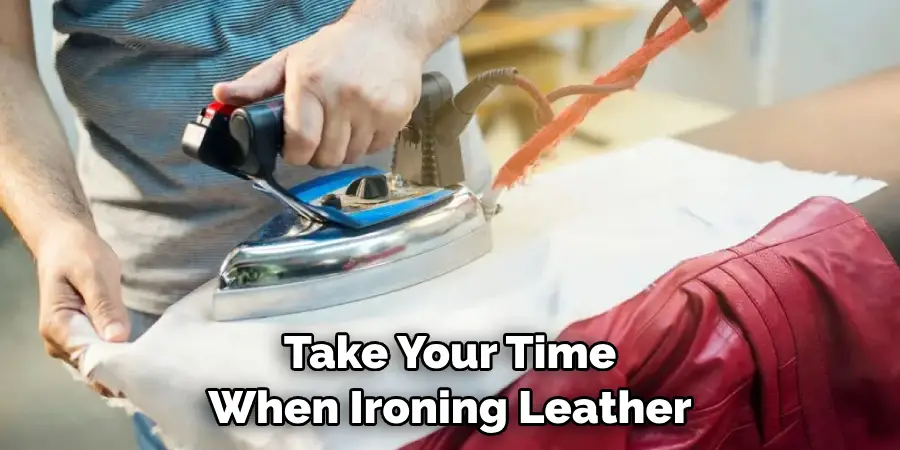
By following these 8 tips, you should be able to iron your leather jacket safely and effectively. Remember to take extra precautions, as the high heat needed for successful ironing can cause irreversible damage if not used properly. Happy ironing!
Frequently Asked Questions
How Long Will It Take to Finish the Project?
Ironing a leather jacket depends on its size and the heat setting you use. If the jacket is small, you should be able to finish the job in 10-15 minutes. If it’s larger, it may take up to 30 minutes. Also, if you are using a higher heat setting, it may take longer.
What Is the Best Way to Iron a Leather Jacket?
The best way to iron a leather jacket is by keeping the temperature low and ironing slowly. Use a pressing cloth between the iron and the jacket to avoid damaging your garment. When you have finished ironing, allow the jacket to cool down before wearing it.
Will Iron a Leather Jacket Damage It?
Ironing a leather jacket properly will not damage it, as long as you keep the heat setting low and use a pressing cloth. However, if you expose your garment to too much heat or press too hard, you may end up leaving burn marks on the leather.
Can I Use Regular Ironing Boards for Ironing a Leather Jacket?
Yes, you can use regular ironing boards to iron a leather jacket. However, if you want to make sure that your garment does not get damaged, it is advisable to place another layer between the board and the jacket. A piece of cotton fabric or an old towel can be used as a protective layer.
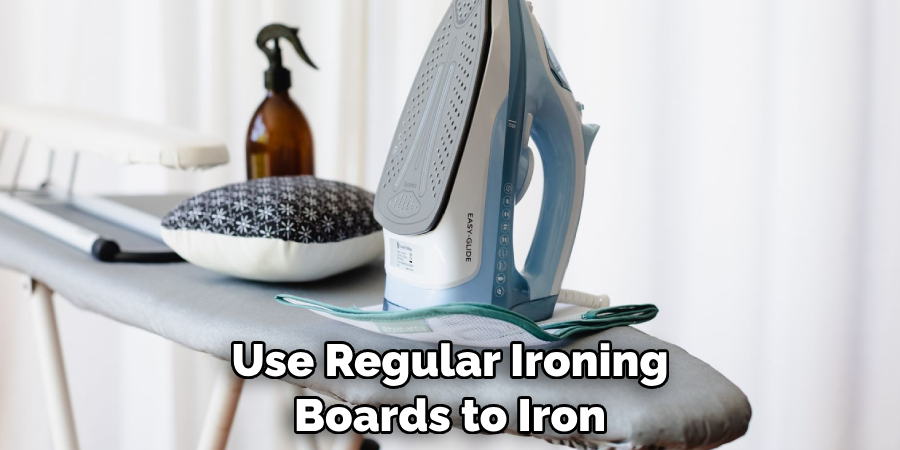
Conclusion
Ironing a leather jacket is easier than it seems! By following the simple steps on how to iron a leather jacket we have outlined, you’ll be able to iron your leather jacket quickly and without any fuss. You should know that when using an iron, you must always make sure the temperature isn’t too hot for the material – high temperatures can permanently damage your leather garment.
It’s also important to take extra care to only iron on flat surfaces and to keep an eye out for any patches or areas of tearing. All in all, if done properly, it’s a simple job, requiring minimal effort and time, and will ensure that your beloved leather jacket looks as good as new! So why not give it a try? We’re sure you won’t regret it.

